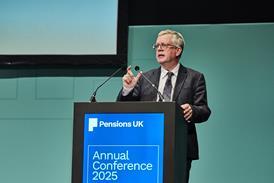Data analysis: European schemes' interest in alternative assets has ceased its upward climb, with no improvement in uptake on last year, according to survey data.
Nearly half of the schemes contacted in Mercer’s annual Asset Allocation Survey have an allocation to alternatives, the same proportion reported in last year'ssurvey, which had grown from 40 per cent in 2011.
This figure was higher among the 700 UK schemes, three-quarters of which said they had made such an investment. Non-traditional assets had increased in popularity as schemes seek to diversify their sources of return to spread their investment risk.
Despite interest flattening, Phil Edwards, principal at Mercer, said the findings – which covered more than 1,200 plans from 13 countries – revealed an increase in the breadth of assets that funds were willing to invest in (see graph).
“[Schemes] are seeking greater comfort in what would have been considered niche or exotic asset classes,” he said. “In particular, one part of the alternative portfolio that we have seen interest in, and a greater breadth in the allocations, is in growth fixed income assets.”
Schemes have also been looking at areas such as senior loans, and other private debt assets, which might have offered higher yields over the past year or so, he added.
Other key findings
The UK has made a notable shift away from equities, with the average equity allocation falling from 43% to 39%.
Large interest in diversified growth funds, with one in five European schemes having an allocation to this type of strategy.
The proportion of European schemes across Europe that allocate some part of their assets to liability-driven investment increased from 15% to 26%.
Simeon Willis, principal consultant at KPMG, said the slowdown in interest for alternative investments after such a prolonged period of growth could be the result of "idea fatigue".
“It could be that trustees had a wave of new ideas come from their advisers and they have really grabbed them and put them in place,” he said. “But then after having done that, there is a reluctance to churn the portfolio and maybe a feeling of wanting to see how the market performs.”
But it is likely that alternatives will remain an important part of schemes’ investment strategies in the future, he added.
Some schemes surveyed were starting to consider alternative real asset investments in their hunt for income and protection against rises in inflation.
“This includes things like ground leases or low-risk infrastructure, which can offer a long-term, long-dated inflation-linked income stream with positive real yield in many cases,” Edwards added.






















